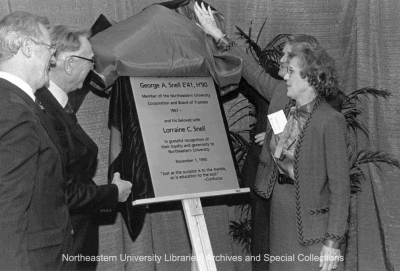2010
Rolling Stone Columnist: Matt Taibbi at Snell Library
Science Direct Scheduled Outage This Weekend
* U.S. Eastern Standard Time (EST): 7:30AM EST – 4:30PM EST * Greenwich Mean Time (GMT): 12:30PM GMT – 9:30PM GMT * Singapore Time (SGT): 8:30PM SGT, November 13 – 5:30AM SGT, November 14
This is an exceptionally long and nearly all-day outage at a busy time of year. Please plan accordingly and get your ScienceDirect ejournals now!Advice and research for teachers of writing
College Composition and Communication focusing on practical strategies for teaching based on the latest research and theory
Language Arts, a magazine for those who teach elementary and middle school writing
Research in the Teaching of English for original research and scholarly essays on teaching English at all levels
I’ve been enjoying looking at these as I reflect on how I was taught to write, and on the NU Libraries’ support for First Year and Advanced Writing in the Disciplines programs at NU. Of all the skills I learned in school and college, writing has been the most important, hands down. What do you think helps students learn to write? Do you find the essays in the NCTE journals helpful? Practical? Provocative?It Was 20 Years Ago Today. . .
 (Click for larger image)
Happy Birthday, Snell Library! November 1, 1990 was the formal dedication ceremony for Snell Library. It’s hard to imagine NU without Snell Library, but for most of the history of the University, the library was a small affair housed in Dodge. Inadequate for the needs of the growing NU community, it was replaced thanks to an alliance including George and Lorraine Snell, University faculty, staff, students, and alumni who undertook to raise funds, and support from a U.S. Department of Defense grant. As part of the project, our first online catalog, “Nulis,” was also established around the same time.
In 1990, the things we take for granted today about Snell were inconceivable to most people. The concept of a catalog on a web site, to say nothing of a cell phone, was hard to imagine; so was the notion that most journal subscriptions would be online. There was no Digital Media Design Studio for students to create videos, nor a program to convert our printed archival records to digital form. Email delivery of journal articles from interlibrary loan… even a Cybercafé was hard to imagine in those “no-food-in-the-library” days.
One thing that hasn’t changed: the centrality of Snell Library. Architecture professor Peter Serenyi put it so perfectly:
(Click for larger image)
Happy Birthday, Snell Library! November 1, 1990 was the formal dedication ceremony for Snell Library. It’s hard to imagine NU without Snell Library, but for most of the history of the University, the library was a small affair housed in Dodge. Inadequate for the needs of the growing NU community, it was replaced thanks to an alliance including George and Lorraine Snell, University faculty, staff, students, and alumni who undertook to raise funds, and support from a U.S. Department of Defense grant. As part of the project, our first online catalog, “Nulis,” was also established around the same time.
In 1990, the things we take for granted today about Snell were inconceivable to most people. The concept of a catalog on a web site, to say nothing of a cell phone, was hard to imagine; so was the notion that most journal subscriptions would be online. There was no Digital Media Design Studio for students to create videos, nor a program to convert our printed archival records to digital form. Email delivery of journal articles from interlibrary loan… even a Cybercafé was hard to imagine in those “no-food-in-the-library” days.
One thing that hasn’t changed: the centrality of Snell Library. Architecture professor Peter Serenyi put it so perfectly:
“It is in its siting…that the library makes its most dramatic contribution to the campus as a whole…Opening up to the north and west, the Snell Library gathers the campus around itself, thus becoming not only the intellectual center of the University but its physical center as well.” (Tradition and Innovation, p. 33)
I think this is as true today as it has always been. In the coming year, on this blog and elsewhere, we’ll be reflecting on our anniversary and on what the next 20 years hold in store for Snell Library. What do you think Snell Library will be 20 years from now?